
Johannes Chrysostomus Wolfgangus Theophilus Mozart (yup, that's his full baptismal name; Amade was added later and in the form Amadeus was apparently only used as a joke) was born January 27, 1756. Wolfgang, son of composer Leopold Mozart, is the most famous child prodigy in the history of music. He learned to play piano by age three and took up composing at four. Soon he and his sister and father were touring Europe, playing for kings (Louis XV, George III). It's a good thing he started early, because he died in 1791 at age 35 -- and improbable legends immediately sprang up, as famously retold in the movie Amadeus. But in reality he was just another guy who didn't take good care of himself and lived in a time when medical science was, well, not very scientific.
The 250th anniversary of his birth has occasioned a spasm of celebratory activities, not least in the recording industry. There's even a new 170-CD box from the budget label Brilliant Classics of recordings of his complete works, about half reissues and half done for this release -- and only $299 on www.Arkivmusic.com. Of earlier vintage is another complete set on Philips. I'm not rich enough to own either, although I have pieces of both. There are some five thousand recordings available, and I certainly haven't heard them all, but I do have my favorites, and here are some of them.
During his lifetime, Mozart was most famous for his piano concertos and his operas. In both he was highly innovative and influential. It was the increase in freelance musicians playing public concerts for the entertainment of the bourgeoisie -- instead of court orchestras playing privately for royalty that made the solo concerto rise in prominence. It helped that the keyboard of choice switched from the harpsichord to the somewhat louder fortepiano (the ancestor of the modern piano) and that such crowd-pleasing virtuosi as Mozart wrote tuneful, dazzling works to feature their own playing. In the Classical period, the dominant idea in concertos was that masculine and feminine themes were contrasted; nobody ever used this concept more effectively than Mozart, whose mature works in the genre are perfectly proportioned and tunefully catchy.
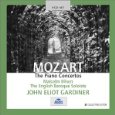
There is a matter of taste that enters into all discussions of favorite recordings of Mozart, and that's the choice of instruments: modern or period. It's especially crucial in the piano concertos: Do you want to hear them on a modern piano, or on an authentic fortepiano? Everybody should hear at least a few on the fortepiano to have an idea of the sonic limitations Mozart was dealing with. For those accepting of, or enthusiastic for, the fortepiano, there's a fine nine-CD box set from Archiv utilizing the three greatest exponents of the instrument: Malcolm Bilson, Robert Levin, and Melvyn Tan. It's Bilson's show; Levin pitches in on the Concerto for 2 Pianos in E flat major, K 365, while Tan joins them for the Concerto for 3 Pianos in F major, K 242. They are accompanied by the English Baroque Soloists conducted by John Eliot Gardiner, one of the leading period-performance gurus. Financially it's not much of a hit to check it out, now in the vicinity of $42 for a physical copy [updated as of 2011].
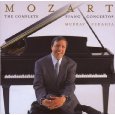
However, I prefer Murray Perahia's ten-CD box (Sony), now around $52 [2011] and well worth the extra tenner. Unlike Bilson, he includes the first four solo piano concertos (arrangements of C.P.E. Bach piano sonatas), though not those two multi-piano ones, and he conducts from the keyboard, which is how it actually went down in Mozart's day. Perahia is a sensitive musician who never inflates his part to anachronistic Romantic proportions, neither interpretively nor in volume (no banging here!) yet offers supremely elegant inflections, and plenty of emotional fervor in the minor-key concertos, Nos. 20 (one of the great recordings of all time) and 24.
Of course, there are also favorite interpretations of individual works by different pianists who offer other qualities. Sviatoslav Richter often plays with greater weight to his sound than is strictly authentic, but the verve of his playing sweeps away such objections. His Deutsche Grammophon recording of No. 20 may not have the most refined accompaniment from the Warsaw Philharmonic Orchestra (though Stanislaw Wislocki conducts well enough), but Richter's so thrilling, minor orchestral imperfections are easily listened past. Even better is Richter's in-concert collaboration on No. 27 with English composer Benjamin Britten, who conducts the English Chamber Orchestra, long famous in bootleg releases but finally released officially by the BBC in 2000, with correspondingly better sonics.
Rudolf Serkin was a performer of great intelligence who also lived on the edge in his playing, and made captivating recordings of the same concertos with, respectively, Columbia Symphony Orchestra/George Szell and Philadelphia Orchestra/Eugene Ormandy, formerly available on a CBS Masterworks CD. That particular issue's out of print, but those performances and more of Serkin's Mozart can be tracked down on a European Sony three-CD set. Also noteworthy is Richard Goode's ongoing series on Nonesuch; he's recorded nine of the biggest and with three or four more CDs he'll have covered all the favorites. Like Perahia, he conducts from the piano, but Goode and the Orpheus Chamber Orchestra aim for, and achieve, a fuller and more dramatic sound.
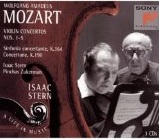
Mozart was not only one of the greatest pianists of his era (some said the best), he was also an excellent violinist, and his violin concertos, fewer in number, only barely rank below the piano concertos in inspiration -- the first two enjoyable, the last three masterpieces. A three-CD Sony set starring Isaac Stern compiles all five and adds four other works for violin and orchestra, with a magnificent performance of the Sinfonia Concertante for Violin and Viola in E flat major, K 364, partnering him with Pinchas Zuckerman. Two CDs and even more of a bargain is the classic traversal of the concertos by Arthur Grumiaux on Philips.
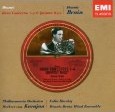
Mozart also wrote four horn concertos; advocacy by masterful players has kept them from being overlooked. The classic Dennis Brain 1954 mono recordings on EMI with Herbert von Karajan conducting will always be favorites for Brain's wonderful tone, but Barry Tuckwell is equally good in his own way and has the benefit of stereo; his EMI and Decca recordings are both good, but by a slight margin the 1972 EMI -- thanks to superior accompaniments by Sir Neville Marriner and the Academy of St. Martin in the Fields -- gets the nod and can be had for a mere $6. Brain and Tuckwell use the modern, keyed French horn; the "natural" (unkeyed) horns of Mozart's day were considerably more difficult to play, with tuning achieved by lip and by moving the hand in the bell, but offer a special timbral experience. Lowell Greer's disc on Harmonia Mundi is a most recommendable example of what these pieces more likely sounded like over two centuries ago.
Considerably less important musically are the two flute concertos and the Concerto for Flute and Harp, but Julius Baker had the most beautiful flute tone ever recorded -- allied to impeccable musicianship (for years he was the first-chair flautist of the New York Philharmonic) -- and in his hands these pieces are irresistible. They were spread across three CDs in Vanguard's Baker series The Virtuoso Flute (also including five Vivaldi concertos plus a piece each by Gluck, Vaughan Williams, and Telemann), and later were bundled on an all-Mozart two-CD Vanguard set that also includes his pupil Paula Robison's lovely readings of the four pretty quartets for flute and strings.

In opera as in so many other genres, Mozart started out imitating others with perfectly enjoyable but relatively unoriginal works, then quickly advanced in adulthood to masterpieces that set new standards. He made his mark with Italian operas. The Marriage of Figaro was his first collaboration with also-influential Italian poet and lyricist Lorenzo da Ponte (whose adventurous life included conflicts with the Catholic Church, getting run out of Venice for adultery, and spectacular business failures before he died in New York City, where he was Professor of Italian at Columbia University). Figaro was based on a play full of sexual and political overtones that caused outrage in Paris and Vienna; da Ponte cut back on the politics but kept the sex for a masterful farce elevated even further by Mozart's best collection of operatic melodies. The Mozart bicentennial prompted a fine recording (in stereo even though it's from 1955) led by Erich Kleiber on Decca that's still a marvel fifty years later thanks to a superb cast (Gueden, Danco, Della Casa, Dickie, Poell, Corena, Siepi); for an equally well-cast version, there's Giulini on EMI (Moffo, Schwarzkopf, Cossotto, Taddei, Waechter, etc.) that's a bargain on two CDs.
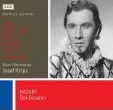
Mozart's monumental Don Giovanni of 1787 is the most ambitious of his Italian operas, combining low humor and profound drama as it explores the last days of legendary lover Don Juan, whose sinful ways find him literally sent to Hell in the opera's stunning final scene. Again, a Decca bicentennial recording ranks high, this one led by Joseph Krips and featuring Cesare Siepi as a vivid Don (along with much the same cast as above) and competes with Giulini on EMI (Schwarzkopf, Sutherland, Frick, Taddei, etc.). In less good sound from the 1953 Salzburg Festival comes an intensely dark alternative from Wilhelm Furtwangler, with Siepi (yes, for a while he owned this role) even more snarlingly incisive (with Schwarzkopf, Dermota, Berry, etc.) in a slow yet taut reading of stark terror (little comic relief here!) that has to be heard to be believed, Expressionist in its savagery.
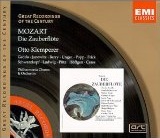
Emanuel Schikander's convoluted libretto for The Magic Flute is an odd mish-mash of comedy, drama, fantasy, and Masonic rites, but Mozart's music triumphs, just as does the oddly childlike main character, a rustic flute player named Papageno. Frankly, as far as my tastes in this opera go, the less dialog the better, so I have a great fondness for a classic recording many shun, Otto Klemperer's. (At least the lack of dialog allows it to fit on just two CDs.) The musical virtues of this 1964 EMI recording are unsurpassed. Klemperer shows a lighter touch and more sparkling wit than his critics credit him with having (if hardly the dashing tempos and spare textures of today's authentic-performance readings) without sacrificing any of his characteristic aptitude for shaping the overall line of a work. And the cast is mostly superb: Nicolai Gedda as Tamino, Gundula Janowitz as Pamina, Walter Berry as Papageno, Lucia Popp as Queen of the Night (spectacular in "O zitt're nicht, mein lieber Sohn"), Gerhard Unger as Monostatos, and Elisabeth Schwarzkopf, Christa Ludwig, and Marga Hoffgen as the Three Ladies (what a trio!). Gottlob Frick as Sarastro is not at his peak, but lesser roles are assumed by such luminaries as Franz Crass and Anna Reynolds. The acting is not always what one would expect for the characters, but this is a recording for lovers of great voices.
As classical repertory became more important than contemporary works -- a movement that started after Beethoven's death and was completely unknown to Mozart -- audiences became more familiar with Mozart's symphonies than had audiences during his life. The standard count says he wrote 41, but there are many early works numbered higher or not at all. "Complete" sets vary in their completeness. Marriner (Philips) offers 53 symphonies, played on modern instruments, in a 12-CD set. Pinnock (Archiv) gives us 48 symphonie,s in period-performance style using authentic instruments, in a box of 11 CDs.
It's mostly the later symphonies that influenced Haydn and Beethoven and now are concert hall and radio favorites. There's a two-CD collection titled The Last Five Symphonies drawn from the Marriner cycle (Nos. 36 and 38-41 -- the only part of "No. 37" that's actually Mozart is a slow introduction, so most collections skip it). The two greatest masterpieces are the last two. No. 40 in G minor stands out for being one of Mozart's few minor-key symphonies, while the regal yet exuberant No. 41 in C major is rightly dubbed the "Jupiter." There's a lot of competition in these works, but Leonard Bernstein's final recordings of them, on Deutsche Grammophon, exude irrepressible joy.
Bruno Walter's Mozart symphony recordings are worth seeking out for his old-world warmth, especially those with the New York Philharmonic in the 1950s. This also makes him the go-to conductor for what might be Mozart's most famous, or at least best-loved, piece, the Serenade No. 13 AKA Eine kleine Nachtmusik (A Little Night Music). Its gently lilting melodies continue to enchant audiences with irresistible Viennese charm. I grew up with Walter's eminently civilized version, packaged with sparkling performances of the overtures to Cosi fan tutte, The Marriage of Figaro, The Magic Flute, and Der Schauspieldirektor, plus an aptly dark yet graceful reading of the Masonic Funeral Music.
Some of the legends about Mozart's death arose because his last composition was a Requiem Mass anonymously commissioned, but mundanely, it was for a Count von Walsegg who liked to pass off pieces by famous composers as his own work. It's hard to imagine anybody would believe Walsegg wrote this masterful Requiem, finished by Mozart's student Sussmayr. For a dramatic, historically informed performance, it's hard to beat Gardiner's on Philips; his choir's unbeatable and his soloists -- Barbara Bonney, Anne Sofie von Otter, Hans Peter Blochwitz, Willard White -- make a great team.
There is much more deserving music of Mozart, but the above will certainly be a good start for any Mozart collection.
